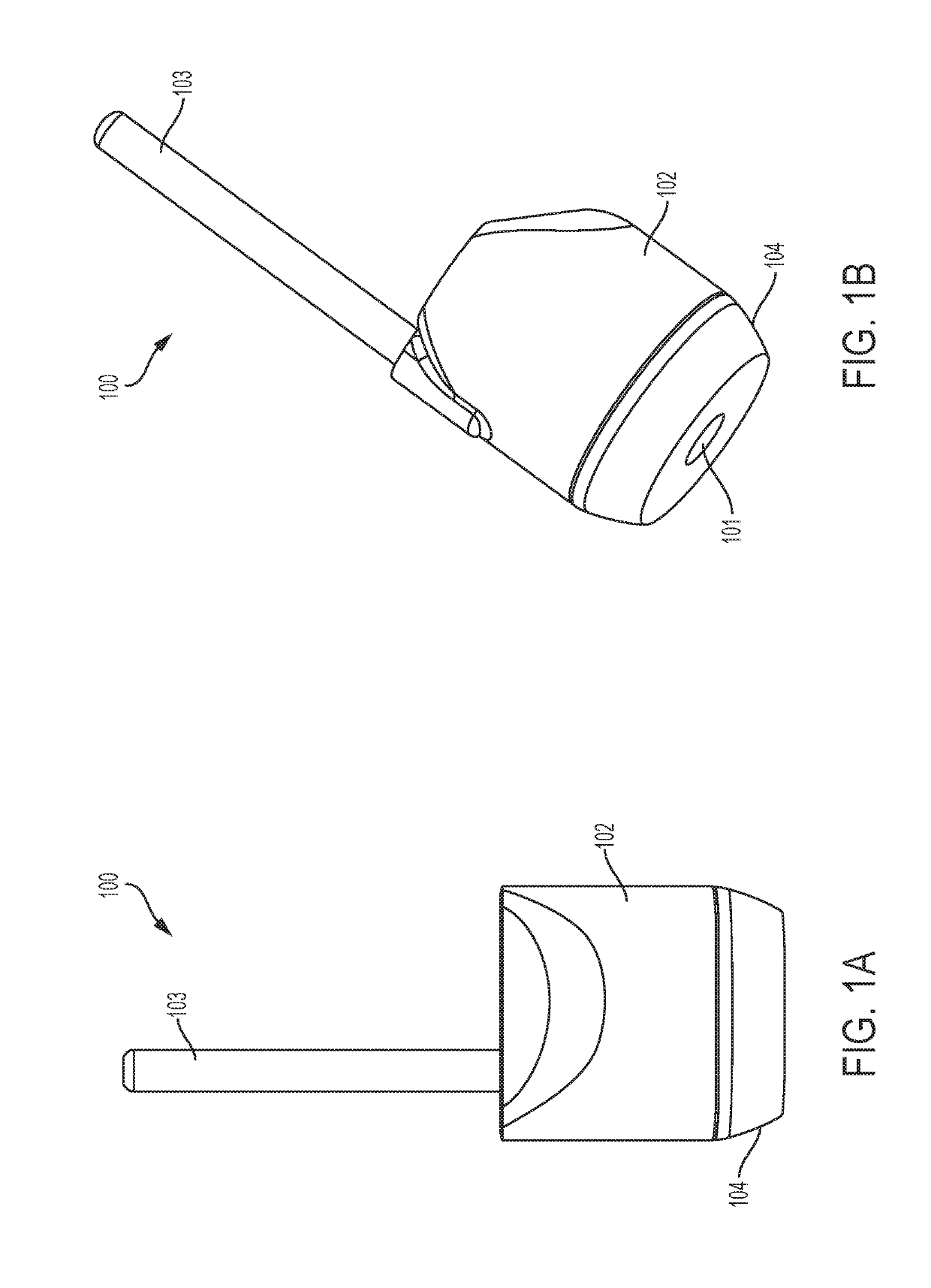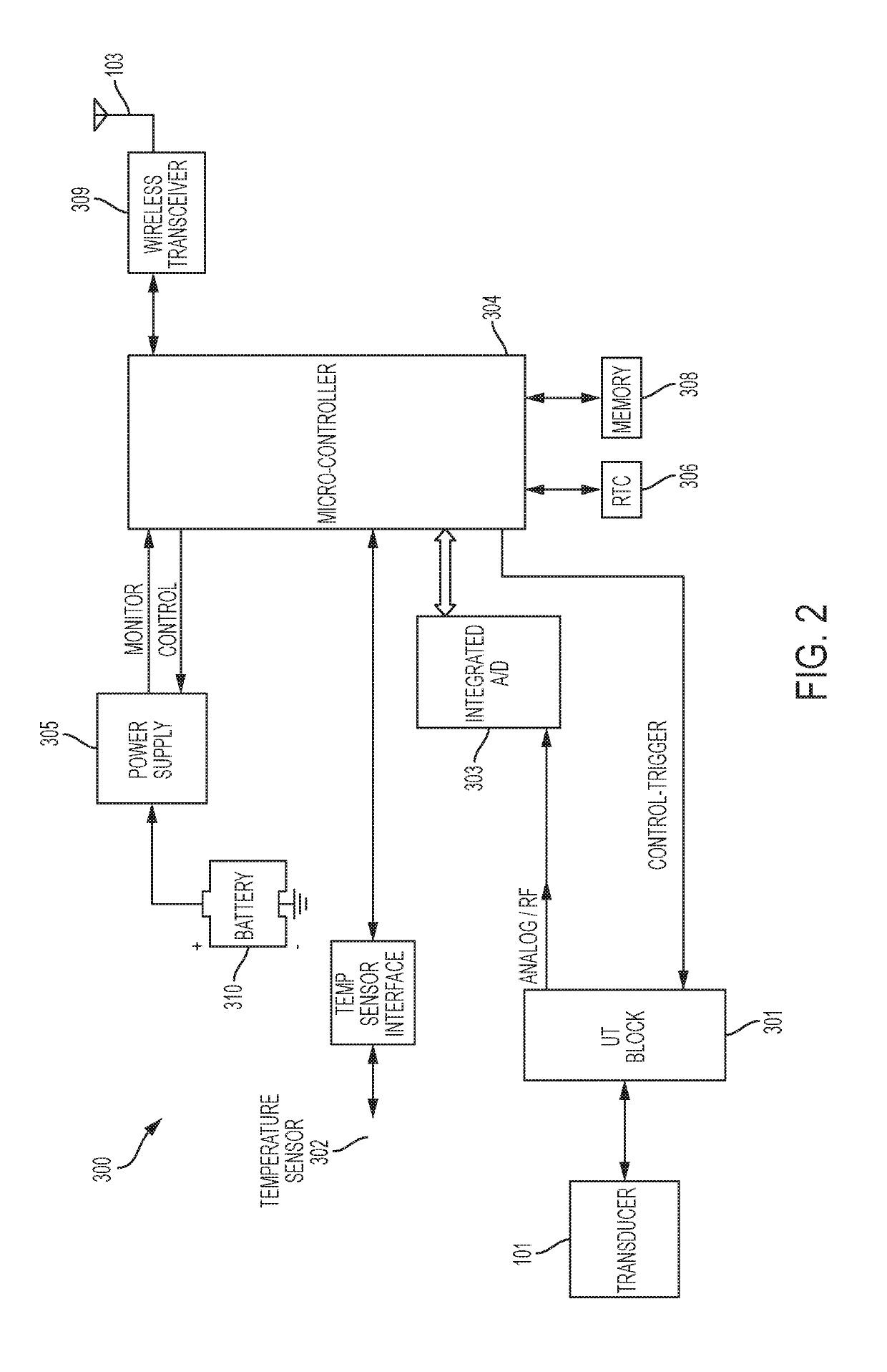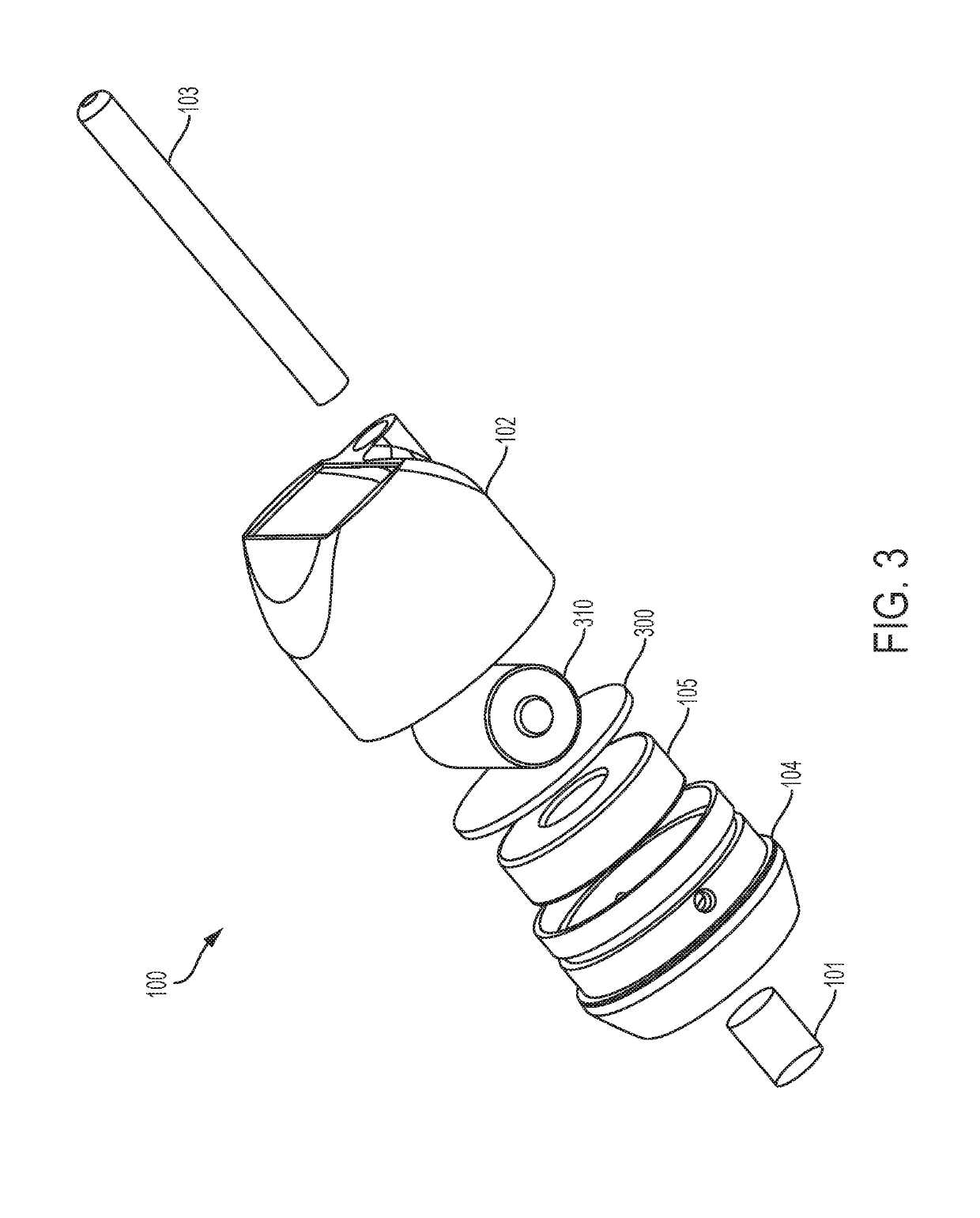Low-power wireless device for asset-integrity monitoring
a low-power wireless and asset-integrity monitoring technology, applied in fluid-tightness measurement, instruments, processing detected response signals, etc., can solve the problems of reducing reducing the processing speed required, and reducing the peak power consumption of the sensor as a whole, so as to reduce the peak power consumption of the sensor, and reduce the overall capacitance of the sensor
- Summary
- Abstract
- Description
- Claims
- Application Information
AI Technical Summary
Benefits of technology
Problems solved by technology
Method used
Image
Examples
Embodiment Construction
[0020]Referring to FIGS. 1A, 1B, 2, and 3, a perspective view and a schematic block diagram of one embodiment of the sensor 100 of the present invention is shown. The sensor is configured for measuring ultrasonically a portion of a structure. The sensor comprises a transducer 101 for converting an analog transmit signal to an ultrasonic transmit signal, and for converting an ultrasonic reflected signal to an analog reflected signal. The sensor also comprises a housing 102, which, in this embodiment, is integrated with the transducer to form a unitary package. The sensor also comprises at least the following contained in the housing: a processor 304; a wireless data transceiver 309 for transmitting wirelessly a data signal from the processor 304; a transmit and receive circuit 301 for transmitting an analog transmit signal to the transducer in response to a transmit trigger from the processor, and for receiving an analog reflected signal from the transducer; an A / D converter 303 for ...
PUM
| Property | Measurement | Unit |
|---|---|---|
| distances | aaaaa | aaaaa |
| frequencies | aaaaa | aaaaa |
| time- | aaaaa | aaaaa |
Abstract
Description
Claims
Application Information
 Login to View More
Login to View More - R&D
- Intellectual Property
- Life Sciences
- Materials
- Tech Scout
- Unparalleled Data Quality
- Higher Quality Content
- 60% Fewer Hallucinations
Browse by: Latest US Patents, China's latest patents, Technical Efficacy Thesaurus, Application Domain, Technology Topic, Popular Technical Reports.
© 2025 PatSnap. All rights reserved.Legal|Privacy policy|Modern Slavery Act Transparency Statement|Sitemap|About US| Contact US: help@patsnap.com



